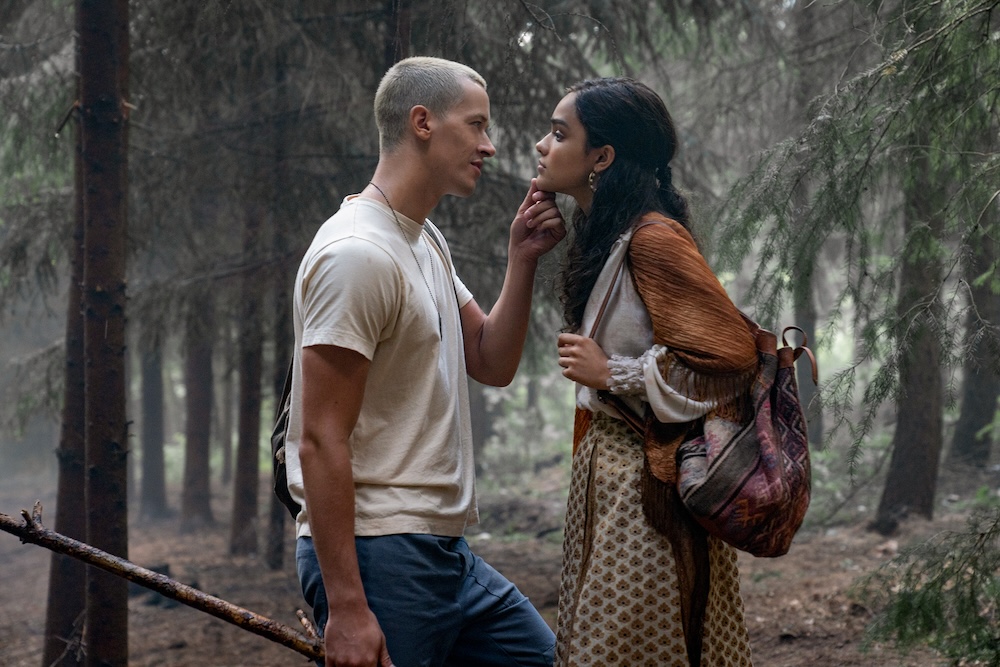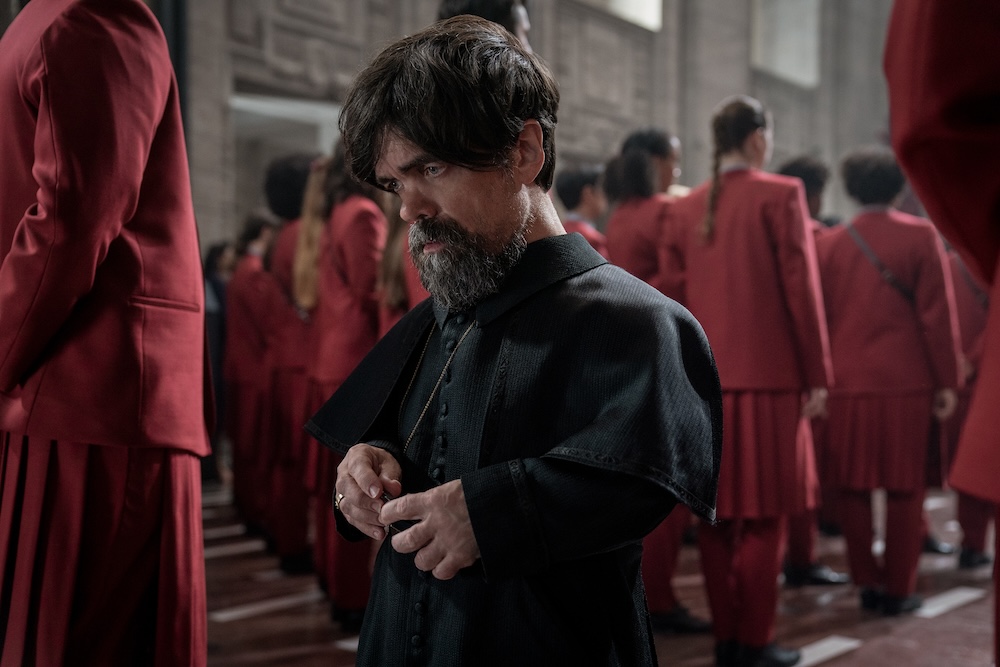
The saga continues: The Hunger Games
Posted on Nov 27, 2023
As the latest instalment in The Hunger Games series hits screens, Trevor Hogg speaks to cinematographer Jo Willems to learn more about the making of the dystopian franchise
After the cinematic adaptation of The Hunger Games trilogy, in which Tributes from the occupied districts of Panem fight to the death in a televised battle, author Suzanne Collins wrote a prequel dealing with the backstory of future tyrannical president Coriolanus Snow (played by Tom Blyth). Eight years on from the last film, The Ballad of Songbirds and Snakes reunites filmmaker Francis Lawrence and cinematographer Jo Willems ASC, SBC – who previously collaborated on Catching Fire and Mockingjay Parts 1 and 2.
“Francis and I have evolved as filmmakers and people, so it was exciting to tackle something set before the other four movies took place,” begins Willems. “The war has just passed so there are still a lot of buildings destroyed and it’s an older architecture. I’ve always preferred shooting in the districts from Catching Fire onwards, as there’s something more painterly and nostalgic about them that I connected to more strongly.”
THE REAL DEAL
Unlike in previous instalments, the event known as The Hunger Games takes place in an arena with interiors captured at Centennial Hall in Wroclaw, Poland and exteriors at Berlin Olympic Stadium. “You’re inside this arena going, ‘How do we make this exciting?’” reflects Willems. “I have to make it look dramatic in terms of lighting and it constantly wants to feel dangerous to the Tributes in there. This is not a happy place! We went for a grittier, realistic feel.”
There was not complete freedom as Centennial Hall is a UNESCO World Heritage Site. “We couldn’t nail anything into the walls, but we had some riggers in there who would climb up to these big concrete beams and hang up lights. I did east, west, north and south, and for where the big hole in the ceiling [caused by an explosion] is I put another few banks there so I could constantly have some contrast. You need to be able to create a dramatic image to drag in the audience.”
About 95% of the footage was shot with ARRI ALEXA Mini LF cameras and ARRI Signature Prime lenses. “There is a little story to this,” reveals Willems. “Francis and I have been shooting everything since 2018 on the ARRI ALEXA 65. When we came to this project, I felt that shooting with a large camera would impede us because there was so much action and Steadicam work. I did a couple of tests for him with the ALEXA Mini LF and Signature Primes during a scouting trip to the arena and he went, ‘Okay, lets do it.’
“The Mini LF is a lighter weight. I can use it on a Steadicam and rigs, it’s easy for handheld and you can get into small spaces – it’s very flexible as a camera.” Normally, two cameras were favoured, but not always. “We tended to shoot on wide lenses so sometimes it’s difficult to get another camera in there somewhere. When we were doing some of the fight sequences in the arena, and the reapings [the event where Tributes are selected], we ended up adding cameras. The most was four, so we could do extra shots from different angles.”
GLASS HALF FULL
Over the past six years, more lenses have been manufactured capable of covering the big sensors of large format cameras. “I’d shot a few commercials on Signature Primes and felt it was the perfect glass for what we wanted to do,” explains Willems. “They’re wide, with not too much bend in the glass and not overly sharp. It definitely has a human aspect to it and doesn’t feel too cold. It has an incredible close focus, which was a big deal. Some scenes we’re inches from the actors.
“It’s a VFX-friendly lens. You can use it in all conditions. In a few scenes in the games, we shot on a 15mm to be super wide in that space because you can see the scope and scale of it. But the 29mm and 21mm were used the most. We also had a 35mm just in case we couldn’t be close enough. You could really get into a close-up with the 29mm and be intimate with an actor.”
Big action sequences were shot listed, however, and coverage for moments of dialogue were determined by rehearsals with the cast on location. “Francis loves wide lenses, shooting long takes, bringing people into a space, turning around and revealing the rest of it,” explains Willems. “When it comes to lighting, you have to be prepared for that. Tungsten was not part of the lighting equipment. It was a lot of Creamsource Vortexes, quite a few ARRI 360 SkyPanels – which are easy to move around and a nice soft light. And ARRIMAXs allowed us to create a hard sunlight coming into that arena. I usually use natural light outside because things can quickly start looking artificial.”
TIME WELL SPENT
Ten weeks was allotted for preproduction and principal photography lasted 17 weeks, with the spring weather in Poland and Germany varying a great deal. “We had one LUT, which is something [visual effects supervisor] Adrian de Wet prefers and is easier for colour correcting,” states Willems. “I graded the single LUT with colourist Dave Hussey at Company 3, but as we were going, he grabbed a LUT from something else and sometimes added 10-15% of that into our original one to mix things up.”
The capture system was ARRIRAW, with 4.5K resolution and 2.39:1 aspect ratio. “This was never a discussion,” remarks Willems. “We did that with our other movies and felt it was still the right call. We shot open gate so Adrian de Wet could have enough information if needed, and obviously it’s a tall sensor.” A device that resembles an electric wheelchair helped Steadicam operator David J Thompson. “As the actors are running through the arena, we could follow them at full speed. That was a fun tool. Other than that, we used cranes a fair amount and had a good drone team in Poland for the inside of the arena.”
One of the most complex shots, which took a long time to get just right, was the opening of the 10th Hunger Games. “We wanted it to be a long take that was handheld and from the perspective of Lucy Gray Baird [Rachel Zegler]. All of those spears and machetes had to fit within quite a long scene.
“We had to rehearse a lot for that one. Over the weekend, we brought the cast in before shooting it to make sure we would get the choreography correct between the actors, stunt people, cameras and lighting.” Willems concludes: “The biggest challenge, in truth, was making the movie feel authentic and real.”
This story appears in the December 2023 issue of Definition.











